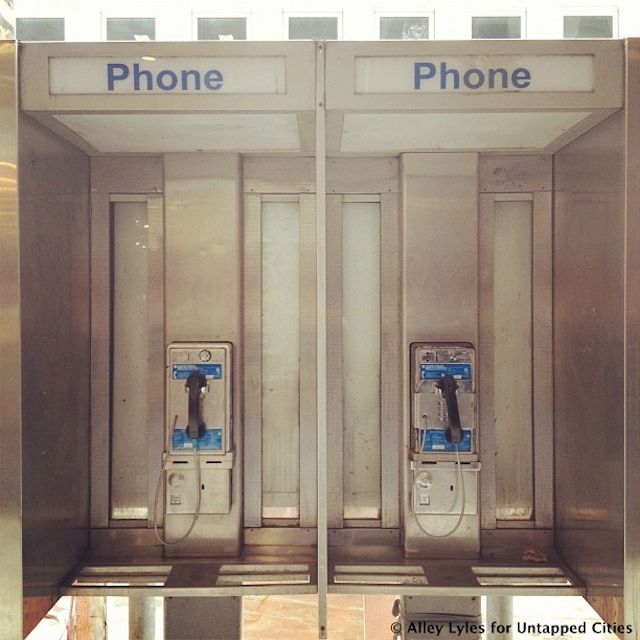Last-Minute NYC Holiday Gift Guide 🎁
We’ve created a holiday gift guide with presents for the intrepid New Yorker that should arrive just in time—


Clark Kent used it to change into his iconic alter ego before he launched into the sky to save the world. It’s a mainstay of kitschy tourist photography. The telephone booth is an iconic structure that has captured the attentions of those around the world, through its use in film, or, even simply, as a noticeable streetscape feature. However, with the rise of mobile, and now smart-phone use, the phone booth has become passe in many cities. In some instances, the payphones no longer work, making the rare collect call home infinitely more difficult.
With growing evidence suggesting that phone booths are obsolete, designers have begun to re-imagine these structures as much more than a convenient calling mechanism. In Brazil, Vivo, a local phone booth company, called upon artists to transform the remaining functioning phone booths into artistic works of their choosing. The Call Parade featured 100 artists’ work with transformations ranging from the depiction of a cityscape to a large replica on the human brain. In Osaka, Japan, phone booths become the home of the goldfish club, Kingyobu, a pop-up aquarium installation that was inspired by the fish themselves, which are considered a good luck charm in Japan, thus, spreading both free art and luck to passersby.
Some phone booth transformations have focused more on functionality to propel their relevance into the 21st century. In New York, a phone booth is used as the entrance to exclusive speakeasy, Please Don’t Tell. Additionally, in April 2012, the NYC Department of Information Technology and Telecommunications proposed working with the communications system City24/7 to replace the phones from 250 booths with free touchscreens that feature local news and neighborhood events. The screens, maintained by City24/7, would allow users to report issues to city information via 311 efficiently. In July 2012, the Mayor’s office announced that 10 phone booths would free Wi-Fi access to the immediate surrounding 100-200 feet. These locations were picked specifically because of their proximity to public plazas. New York City has 12,800 phone booths that could, eventually, serve alternative purposes like pop-up libraries, information centers, or art galleries.
The transformation of these structures signifies the end of an era; phone calls have transformed into text messages, and more focus is now placed on the need for Wi-Fi access. Looking forward, the streetscape may highlight, or at least compliment this shift, whether it’s with a traveling art exhibition, or even a replica of Clark Kent, just as he is about to take flight. The sky is the limit.
This article was originally published on our partner site URBAN Magazine, a production of Columbia University’s Graduate School of Architecture, Preservation and Planning.
Subscribe to our newsletter